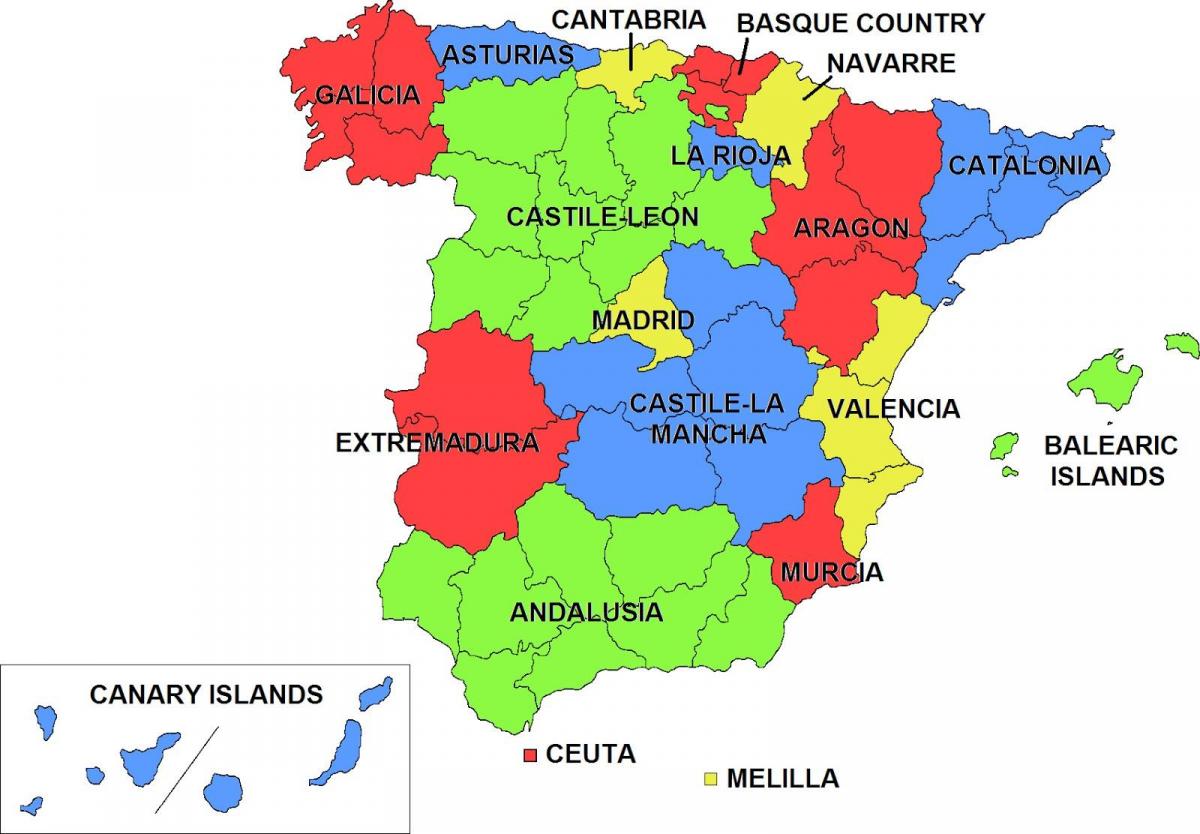search
Spain autonomous communities map
Map of Spain autonomous communities. Spain autonomous communities map (Southern Europe - Europe) to print. Spain autonomous communities map (Southern Europe - Europe) to download. An autonomous community (Spanish: comunidad autónoma, IPA: [komuniˈðað auˈtonoma]) is the first-level political division of the Kingdom of Spain, established in accordance with the current Spanish Constitution of 1978. The second article of the constitution recognizes the rights of "nationalities and regions" to self-government and declares the "indissoluble unity of the Spanish nation". Political power in Spain is organized as a central government with devolved power for 17 autonomous communities as its shown in Spain autonomous communities map. These regional governments are responsible for the administration of schools, universities, health, social services, culture, urban and rural development and, in some cases, policing. There are also 2 autonomous cities.
The basic institutional law of the autonomous community in Spain is the Statute of Autonomy as its mentioned in Spain autonomous communities map. The Statutes of Autonomy establish the name of the community according to its historical identity, the limits of their territories, the name and organization of the institutions of government and the rights they enjoy according the constitution. The autonomous communities have wide legislative and executive autonomy, with their own parliaments and regional governments. The distribution of powers may be different for every community, as laid out in their Statutes of Autonomy. There used to be a clear de facto distinction between so called "historic" communities (Basque Country, Catalonia, Galicia, Andalusia) and the rest.
Autonomous communities in Spain are integrated by provinces (provincias), which serve as the territorial building blocks for the former as you can see in Spain autonomous communities map. In turn, provinces are integrated by municipalities (municipios). The existence of these two subdivisions is guaranteed and protected by the constitution, not necessarily by the Statutes of Autonomy themselves. Municipalities are granted autonomy to manage their internal affairs, and provinces are the territorial divisions designed to carry out the activities of the State. The current fifty-province structure is based—with minor changes—on the one created in 1833 by Javier de Burgos. The communities of Asturias, Cantabria, La Rioja, the Balearic Islands, Madrid, Murcia and Navarre, having been granted autonomy as single provinces for historical reasons, are counted as provinces as well.


